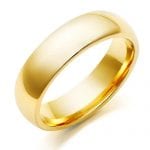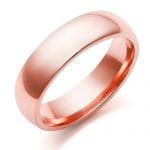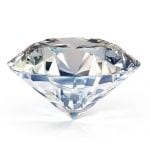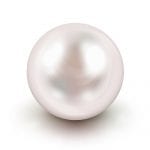Different Metals & Materials
JEWELLERY SERVICE
Different Metals & Materials
With so many different metals and materials used to make jewellery, it’s important to know how to care for your specific piece of jewellery. Use these tips on top of our general jewellery care guidelines, so you can be sure you’re looking after your accessories properly.

Fine Gold
Fine gold or pure gold 999 is gold that is almost pure. Its purity is typically graded using a scale of millesimal fineness. This denotes the number of parts per thousand of pure metal in the alloy, according to its mass. This fineness is generally rounded to a three-figure number, with decimal places to follow where appropriate, especially where it’s used as a hallmark. For example, a fine gold piece which contains 99.9 percent gold would be labelled 999 or .999.
This is the gold most commonly referred to as 24 karat gold, although technically 24 karat gold is 100% pure. Pure gold 999 is the only precious metal that won’t tarnish, but it is a relatively soft metal. Generally, the higher the carat weight, the softer the metal, so 14ct gold tends to be more resistant to scratching than 18ct. This becomes important when choosing engagement and wedding rings; we recommend you wear rings of a similar carat weight together so one doesn’t wear away the other.

Yellow Gold
Yellow gold considered to be the traditional gold colour for jewellery and everything in between, yellow gold has actually fallen behind when it comes to popularity, with white gold now considered to be the more popular choice. When choosing yellow gold, a lower carat is best for those who wish to wear their jewellery on an everyday basis because the gold purity is lower therefore creating a hardier material.
Rose Gold
This pretty gold colour is created by mixing pure gold with a copper alloy, which creates the well known blush shades we’ve come to love. It also makes for a hardier jewellery material, perfect for rings and bracelets. A rose gold ring created using more copper will produce a redder shade, while a higher carat will look pinker. Bear in mind that rose gold can affect those with copper allergies, so it’s a good idea to choose a higher carat of gold purity when making your selection if you have sensitive skin.How to care for your gold jewellery:
- Ensure you clean your jewellery often, dirt and moisture can damage and tarnish yellow gold, especially those high carat gold pieces.
- Try not to mix yellow gold with stronger metals such as silver and lower carat white or rose gold, it can get scratched and damaged.
- Remove your gold jewellery when exercising or completing rough tasks to avoid damage to the clasps and precious stone settings.
How to look after your gold jewellery:
- Rose gold is a little hardier than its yellow and white counterparts so it’s a good idea to wear separately to avoid it scratching other pieces of jewellery.
- It’s a good idea to remove your rose gold jewellery when completing any rough tasks or using harsh chemicals.
- Regularly check over any precious stone settings and clasps on your jewellery. If you spot any damaged ones be sure to have these repaired as soon as possible.
Yellow and Rose gold
Yellow and Rose gold jewellery needs the same level of care. Avoid exposing gold to hard knocks or blows – if scratches, dings or even bends occur, the rings can often be repaired by one of our professional jewellers. Gold doesn’t often tarnish. Instead, these metals develop a rich patina over time – it can take a lifetime for the patina to begin to develop, and a patina on a vintage or antique gold piece is highly desirable and adds to the value of the ring.
Yellow and rose gold should be kept in separate boxes or soft pouches to keep it from scratching. Avoid contact with soap, as it can give gold jewellery a dull appearance. This can be easily rectified by polishing with a specialist jewellery spray and a soft cloth.

White Gold
Pure gold is naturally yellow. It can be given a white appearance by mixing it with other base metals. All white gold jewellery is enhanced by rhodium plating to give a highly reflective appearance. General wear, polishing or buffing will eventually result in the rhodium plating being removed. This is normal for white gold. To maintain the highly reflective rhodium finish of white gold jewellery, we advise that you have it periodically refurbished and re-rhodium plated to look like new again.
Over time, this surface may lose some brightness; this happens less frequently on items such as earrings and pendants that don’t come into contact with other hard objects when worn. If you bring your white gold jewellery into any Chiang Heng Jewellery outlet, we can arrange for it to be re-plated for you at a minimal cost.

Maintain the Glamour of Gemstones
Ruby, sapphire, topaz or amethyst – all gemstones are precious. The rule of thumb in caring for gemstones applies to all – for a quick clean, wipe the stones with a soft lint-free cloth. However, some gemstones need to avoid contact with soap, water and liquid cleaners as they can dull the radiant colour of gems and cause erosion – if you are unsure of what’s best for your jewellery, ask a member of staff in store or read our gemstones guide.
Also avoid harsh chemicals including chlorine or detergents coming into contact with your jewellery, as they also may erode the stone and cause the colour to dull.

Diamond Care
Always store diamond jewellery away from any other jewellery and separately. Diamonds are the hardest gemstones but a diamond can scratch another diamond and can easily scratch another gemstone. Don’t wear your diamonds when doing physical hard work. Even though a diamond is incredibly durable, it can be chipped by a hard knock.
You can clean your diamond at home using mild liquid detergent and a soft brush, or by using a specialist diamond polishing stick. However, to get your diamond ring to its beautiful best, simply take it to your local Fraser Hart store and we’ll clean it professionally and check it under our Diamond Guarantee.

Precious Pearl Care
Pearls are delicate gems, organic and one of a kind. With a low resistance to heat, it’s best to keep them away from household chemicals including perfume, makeup and hairspray. Chemicals found in these products can dull the luster of your pearls.
Before putting your pearls away, wipe them with a dry or damp cloth and store them separately from other jewellery to avoid scratching their tender surfaces. We recommend that pearl necklaces and bracelets are re-strung every 2 years.
Pay close attention to your delicate pearls – if you wear your pearls a lot they will need restringing every year or so, so keep an eye out for damage and bring them along to see us if they need any special attention.

